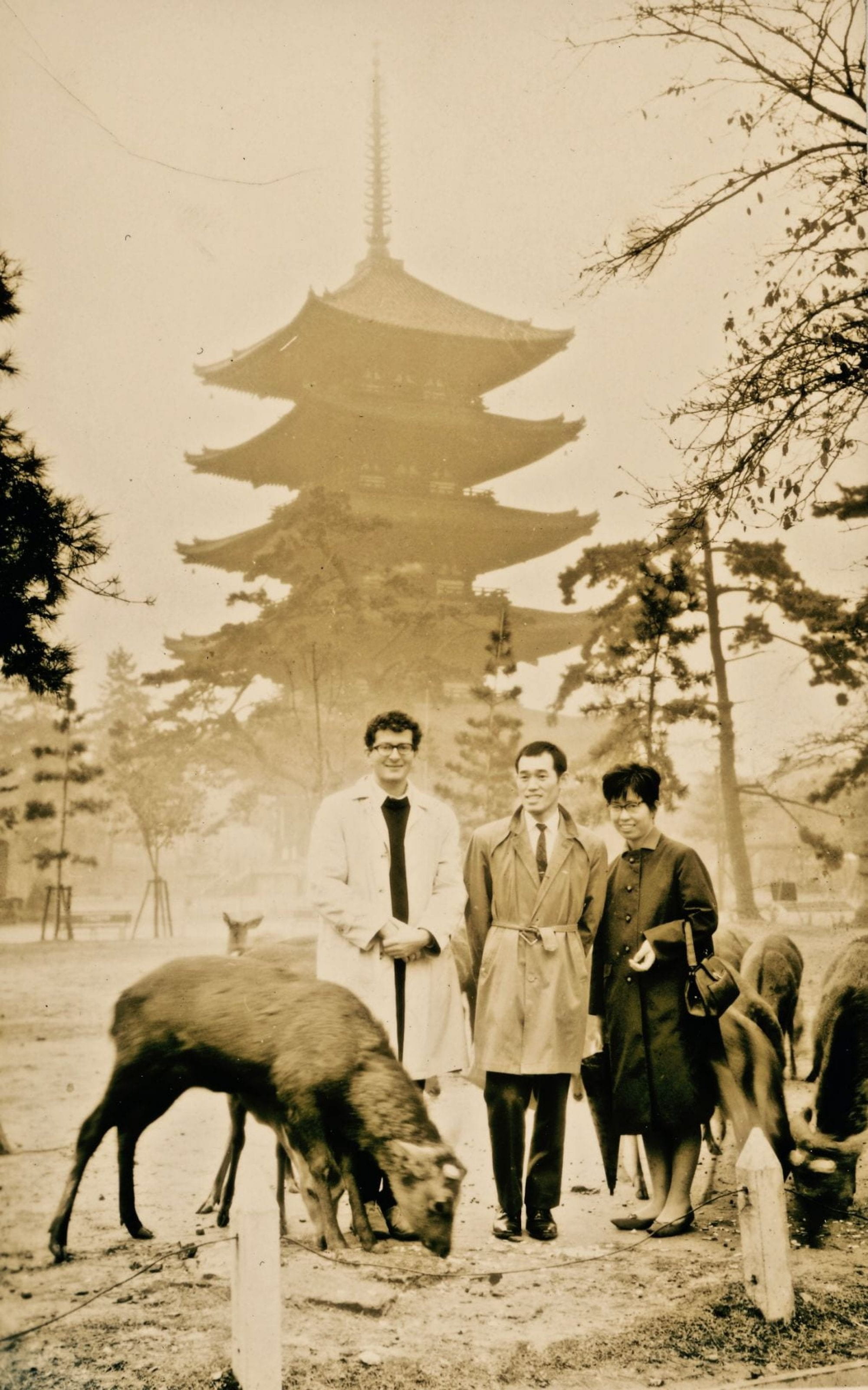Yamaguchi Soken 山口素絢 (1759-1818)
Soken gafu sōka no bu 素絢画譜草花之部
Volumes 1-3
Publisher: Hishiya Magobē and Noda Kasuke, Kyoto
Edo period (1603-1686), 1806
Woodblock printed book; ink on paper
26.9 x 18.6 cm

In Soken gafu sōka no bu, Yamaguchi Soken illustrates seventy-three kinds of plants in three volumes. The opening shown here presents a bitter melon in full bloom, the tendrils of the plant arching gracefully across the page. To achieve the variation of tone, the leaves were carved in lower relief than the vines, attainingthe effect of gradation of color in a single monochrome block. This visual style and innovative method of using a single block came to be associated with Soken. The more frequently employed technique of printing with two separate blocks to apply various shades of ink also appears in this book.
Soken was often employed to produce illustrations for painting manuals. The publisher’s colophon page advertises another Soken-illustrated title,Yamato jinbutsu gafu (Picture Album of the People of Yamato), issued in two parts a few years earlier, in 1799 and 1804. The colophon also advertises that Soken’s painting manual of landscapes, figures, and flower-and-bird scenes will soon be published; however, only the volume on landscapes came to print. Soken was probably commissioned by his publishers to produce studies on various painting themes, and he may have been responding to Chinese painting manuals like the Mustard Seed Garden Manual of Painting.

The preface to Soken gafu sōka no bu introduces two approaches to flower-and-bird painting and elevates Soken as one of the great painters of this subject. It reports that the subject was established by Chinese painters Huang Quan (903-965) and Xu Xi (d. 975), who used detailed linework and vibrant color. The freehand style of the monochrome paintings that flourished during the Yuan (1271-1368) and Ming dynasties (1368-1644) constituted the next phase of development. It further claims that Soken has surpassed both of these lineages and is thus no longer limited by imitation. The preface adds that painting manuals as a genre had become a device of promoting the painter, often through dialogues with established precedents in Chinese painting.
The second and third volumes in the Tress collection include plant names inscribed in red, but the first volume does not, suggesting that these volumes were brought together at some point to form a set. This is further indicated by the different collectors’ seals and inscriptions in the first volume and the other two volumes.
Tim Zhang
Selected Readings:
Mitchell, Charles H. The Illustrated Books of the Nanga, Maruyama, Shijo and Other Related Schools of Japan: A Biobibliography. Los Angeles: Dawson’s Book Shop, 1972.
Suzuki, Jun, and Ellis Tinios. Understanding Japanese Woodblock-Printed Illustrated Books: A Short Introduction to Their History, Bibliography and Format. Leiden: Brill, 2013.
Tinios, Ellis. “Soken gafu sōka no bu.” The World of the Japanese Illustrated Book: F|S Pulverer Collection, 2016. https://pulverer.si.edu/node/411/title/1.

